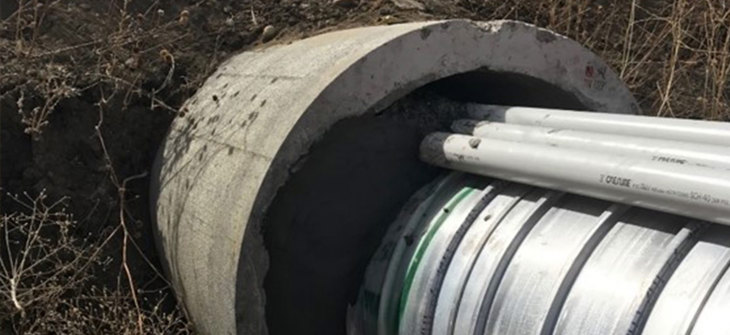
A Response to Frequently Asked Reline Questions
July-01-2022
Continuing to address some of the recently asked questions regarding reline, I wanted to respond to a few other questions that may warrant a little more time and attention. I hope these responses prove helpful and aid in your next reline/rehabilitation project opportunity. Should you have any other questions on the reline process, please reach out to us!
- Are owners concerned that relining results in the pipe diameter being reduced and negatively impacting the hydraulics?
- If you are relining either a culvert in outlet control, or a storm/sanitary sewer, the hydraulic capacity may still be improved even with a smaller diameter pipe.
- In the case of inlet control, inlet end improvements such as end sections, beveled headwalls, or oversized inlets can be implemented to reduce the effects of hydraulic loss.
- If these improvements do not achieve passage of the desired event, then the pipe will need to be replaced instead of relined.
- At what size does relining a host pipe become more economical than cast-in-place-pipe (CIPP)? CIPP requires some form of bypass pumping. Relining a host pipe can be installed in the wet in most cases, thereby making a reline solution generally less expensive then CIPP in all diameters.
- How much quicker is the pipe relining process versus traditional dig and replace? There are many variables which need to be considered such as material, diameter, access, and pipe length. Many culvert relines can be finished in a day. Sewers are typically longer sections with more restrictive access. Planned time for a reline install could be anywhere between 50% and 80% of the time it takes to dig and replace. There is also the added benefit of not having to account for any road closures. The traffic/public will not be impacted or notice any disturbances since their road is not affected.
- Do you have any products that are flexible enough to be used with minor (<5 degree) deflections in the host pipes without using special joints? Deflections are typically addressed by using a smaller diameter reline pipe and shorter reline pipe lengths. This might create concerns hydraulically but will allow for successful navigation of the deflections.
- How much cleaning of the culvert is required to be able to push the liner through? All potential obstructions (rocks, inlet stubs, sediment, etc) need to be removed.
- If the bottom section of the existing pipe is mostly missing, can you still push the liner pipe through? Do we need to complete some sort of repair before lining? If the invert of the existing pipe is missing, any voids will need to be grouted prior to sliplining. This will assure no further erosion occurs. Once all voids are filled, we have a new temporary invert on which the liner pipe can be inserted. Sacrificial runners such as wood are used in the new invert to decrease the friction of the liner pipe being pushed through.
